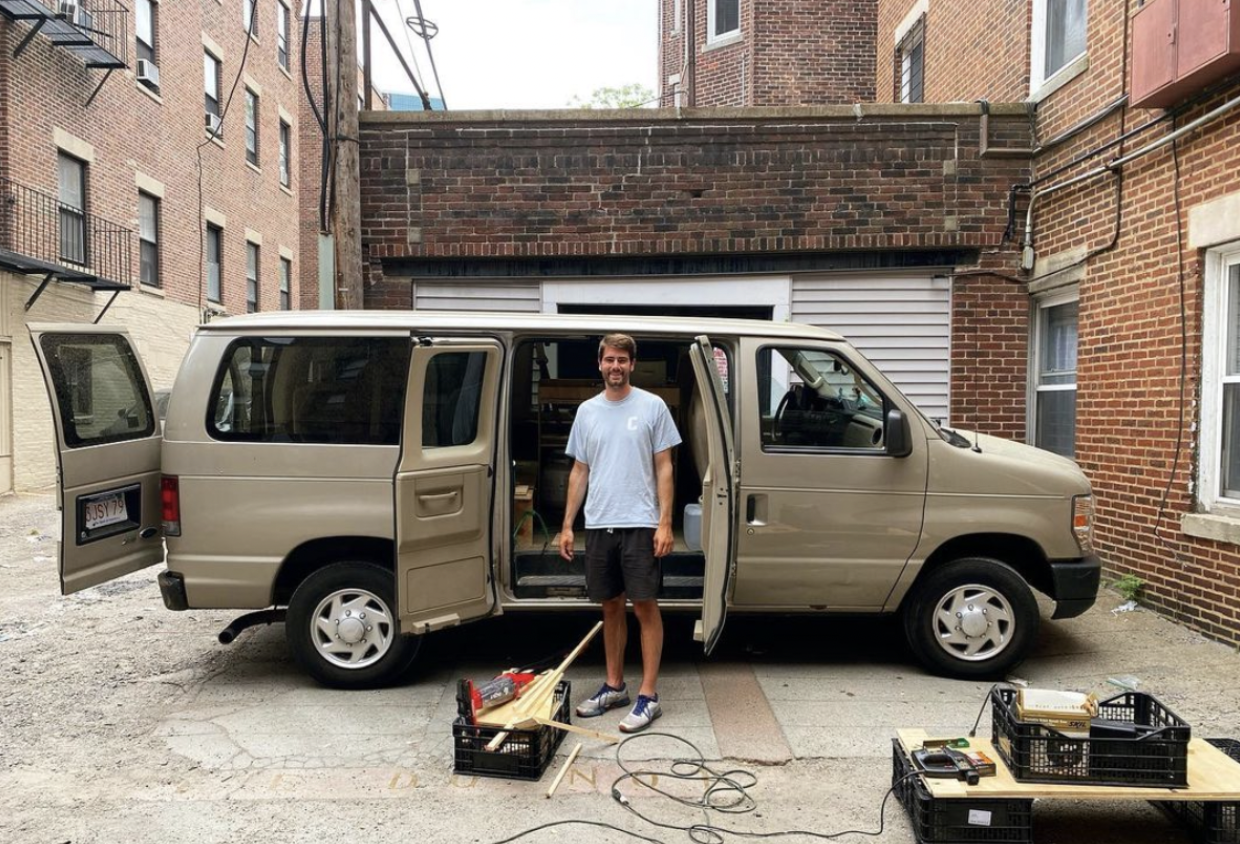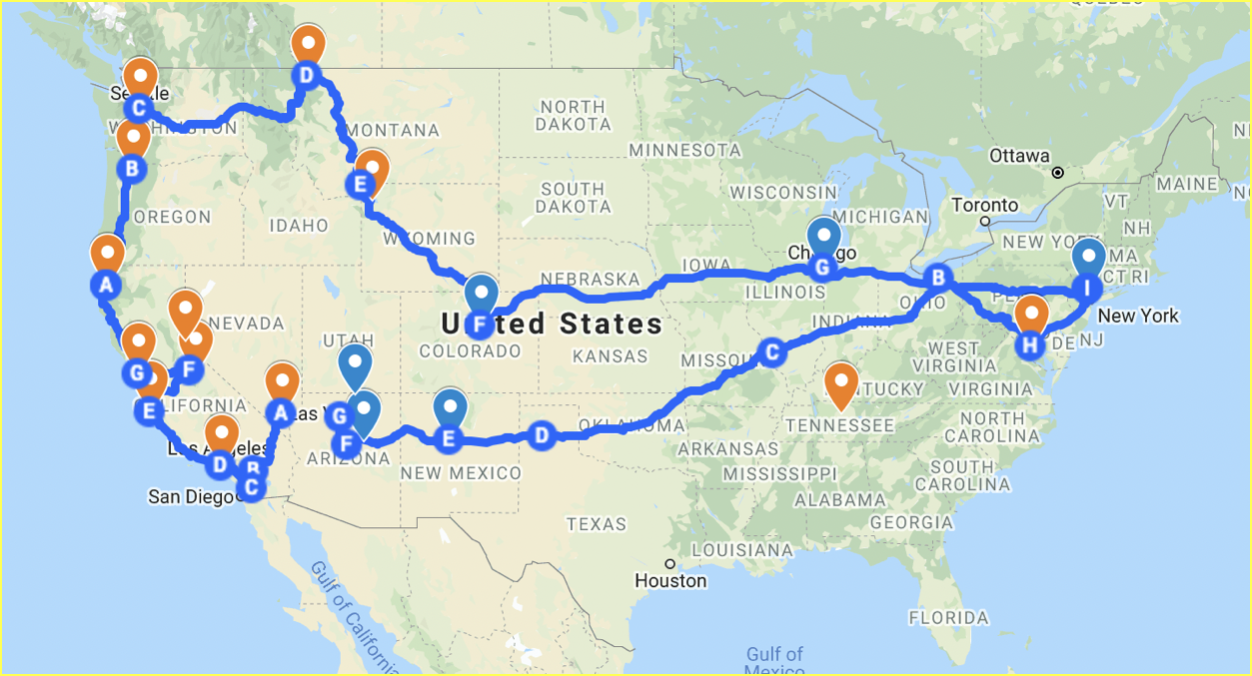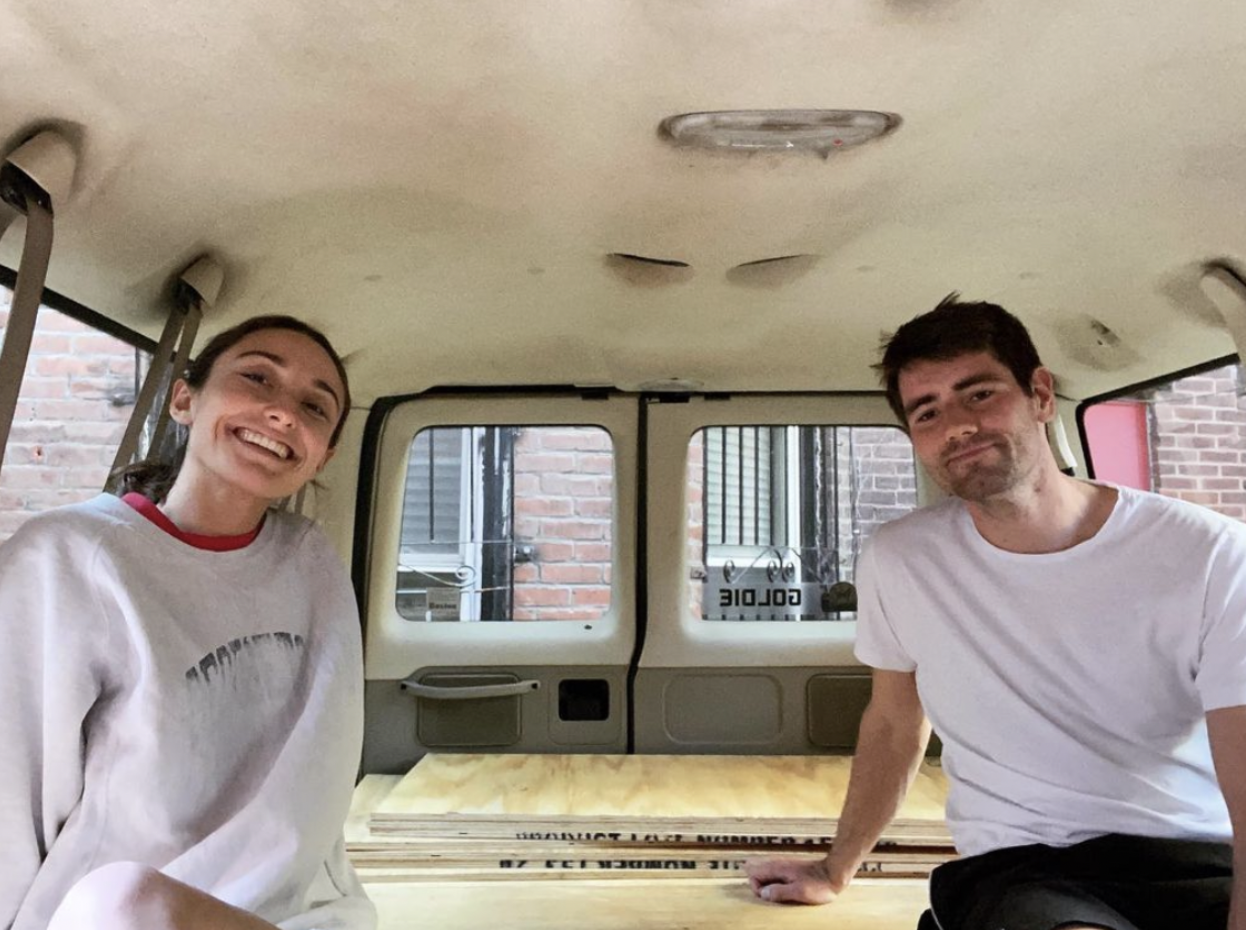While idyllic van life has become increasingly popular on social media, there are many challenges when it comes to the preparation for a cross-country van trip which are not commonly discussed.
Jacob Raillon building the van. Maddie Durso.
Van life seems appealing and idyllic on TikTok, but there are many challenging aspects people don’t think about when it comes to cross-country van travel. Here’s how two people are preparing for their trip in a tiny home and planning for each day on the road.
Maddie Durso and Jacob Raillon, based in Boston and collectively @maddieandjacobontour on Instagram, are eager to begin their cross-country journey. Maddie, an art advisor from New Jersey, and Jacob, a recent college graduate from Germany, will be heading west from New Jersey. Along their route, they will be hitting major stops like Cleveland, St. Louis, Oklahoma City, Amarillo, Albuquerque, Sedona and the Grand Canyon. They then plan to head up the West Coast from Los Angeles to Seattle, from there visiting major national parks such as Glacier National Park and Yellowstone National Park. A map of their trip is included below.
Maddie and Jacob’s route. Google Maps.
Purchasing and renovating a van is difficult and expensive in and of itself. While some move into a vehicle they already own, others pay up to $45,000 for a new van, with an additional cost of up to $15,000 for conversions. However, Maddie and Jacob were able to buy a used van for $4,000.
After purchasing and renovating their van (which cost in total about $5,000), they had to focus on the necessary amenities for van travel, such as showering, going to the bathroom, sleeping, working, getting Internet or signal, fueling up on gas, etc.
These tasks are much easier said than done, and Maddie and Jacob worked on these issues up until their departure. They purchased a weBoost to boost their signal on the road, an extra battery in case of any problems, a water tank for showering and drinking water, and much more.
Another thing they had to think about is gas prices. It costs about $70 to fill up the tank of their van, and their trip will be a maximum of 10,000 miles. Constantly stopping and starting their van wastes gas, so they plan to be careful about how many times they pull over to use a bathroom, take a shower, or see a beautiful site.
They also must plan for how much food will cost, how much food they can initially pack and how they will cook on the road. Many van travelers find that they stop at fast food restaurants more often than expected, which is neither nutritious nor cost-effective.
According to the U.S. Bureau of Labor Statistics, food costs in the U.S. are 5.76% higher in 2020 than in 2015, so Maddie and Jacob will have to budget for any extra or unexpected food costs.
Maddie and Jacob’s van. Maddie Durso.
But possibly the biggest obstacle they have faced in planning their trip was finding campsites to stay in overnight. Many campsites cost between $25 and $80 per night depending on the state. Furthermore, many are hard to access, so locating a campsite is extremely tricky and requires considerable research and preparation. Luckily, there are many websites and apps that are helpful in finding overnight campsites.
Roadtrippers is a company that helps travelers plan road trips and find destinations “off the beaten path,” connecting users with some of the country and world’s most interesting locations. Roadtrippers helps users plan, book and navigate throughout their trip.
Much like Roadtrippers, The Dyrt is committed to helping users have the best camping experience possible. Once the user decides on a route, The Dyrt will find campgrounds to help build the ultimate camping trip experience. With these websites, Maddie and Jacob have been able to plan for the first half of their trip.
It generally costs approximately $2,200 per month for two people to live and travel in a van. However, as Jacob said, “if time and effort aren’t constraints and you don’t need more than a bed, gas, stove and some storage, you can spend less than $400 on everything.” Jacob even said that he was able to manage the whole conversion in less than 20 hours since he had everything in one place.
While Maddie and Jacob were able to save money through careful research, there is still the issue of finding free campsites. iOverlander is a mapping app that shows users free campsites—whether they are random places off the road or in parking lots. “I’ve been cross-referencing places on the iOverlander app with the Roadtrippers website, which has more legitimate camping places and attractions in specific areas,” Maddie said.
However, they have found that even with all of these resources, it is still difficult to find campsites. “It’s still hard to find campsites that are free and at the same time have really beautiful sites and nature, which is basically what this trip is all about,” Maddie said. “The places listed on apps tend to just be in parking lots, which isn’t really what we want.”
Maddie Durso and Jacob Raillon in their van. Maddie Durso.
As aesthetic and enticing as van life appears on social media, there are so many factors not commonly talked about online that can become annoyances when planning a trip.
When asked if all of the preparation, worrying and research was worth it, Maddie said, “Yes. The research is all super worth it because the last thing you want to do is spend the whole trip finding places to sleep. And with all the research, I have discovered places that I wouldn’t have known about otherwise.”
Isabelle Durso
Isabelle is an undergraduate student at Boston University currently on campus in Boston. She is double majoring in Journalism and Film & Television, and she is interested in being a travel writer and writing human-interest stories around the world. Isabelle loves to explore and experience new cultures, and she hopes to share other people's stories through her writing. In the future, she intends to keep writing journalistic articles as well as creative screenplays.





